
Most of the people on the lookout for a Fifties or Sixties classic car as a restoration project live in the hope that the vehicle they eventually find will have bodywork that is in good shape.
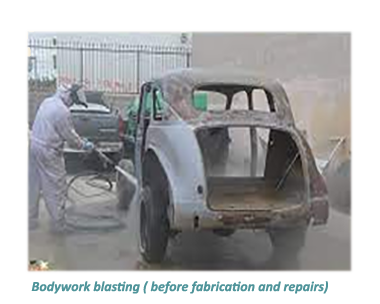 Very few get that lucky, with vehicles whose bodywork has remained in tip-top condition after Seven or more decades of being driven on the roads of Britain and Western Europe, after which stored in the least ideal of conditions.
Very few get that lucky, with vehicles whose bodywork has remained in tip-top condition after Seven or more decades of being driven on the roads of Britain and Western Europe, after which stored in the least ideal of conditions.
When examining a car before purchase, every effort must be made to review the vehicle in natural sunlight, even if the car does not run.
If that is not possible, viewing the vehicle under bright light is the second option, preferably fluorescent, but if not, a powerful hand torch will do.
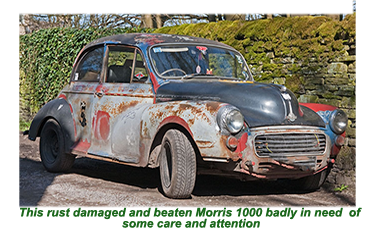 In any scenario, close inspection should be carried out along each side of the body.
In any scenario, close inspection should be carried out along each side of the body.
If the panels appear wavy or rumpled, the restorer should give it added scrutiny, especially seeking out suspicious lumps and bulges.
These lumps and bulges are usually indications of collision damage in the past, repaired but to a substandard level. If so, the faulty panels will need to be repaired or, worse still, removed and replaced.
A procedure that will be both time consuming and expensive.
Experienced restorers have learned to stick a small but powerful magnet in their pocket when carrying out a pre-purchase appraisal of the vehicle.
Assuming the car has a steel body (a few sports cars are made of aluminium or fibreglass), a magnet should stick to it.
By running their magnet over areas that are likely to have either suffered an impact or rusted out. This information can be used either as a negotiation tool, a reappraisal of the bodywork renovation budget or an ample warning to walk away from the deal.
Especially vulnerable to rust are front buffers and doors that get hit a lot as well as kick panels, door sills, and the aprons under the car's boot lids.
![]()
If the magnet does not stick to any of these potential problem areas, then the chances are that a thick patch of body filler is lurking there below the surface, requiring repair.
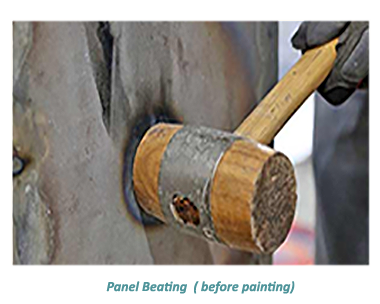 Poorly repaired dents or rusted areas in themselves may not prevent the purchase of a car, providing these factors are considered in the price of the vehicle.
Poorly repaired dents or rusted areas in themselves may not prevent the purchase of a car, providing these factors are considered in the price of the vehicle.
Saloon cars are usually found in better bodily shape than sports tourers. The main reason is that saloon cars were adequately sealed against the typical winter climates of the United Kingdom or Western Europe, while sports cars were a lot less so.
Another explanation is that saloons were fitted with wheels and tires larger in diameter than a typical UK or European sports car, making them less prone to underbody corrosion due to the copious amounts of highly corrosive salt applied during the winter months.
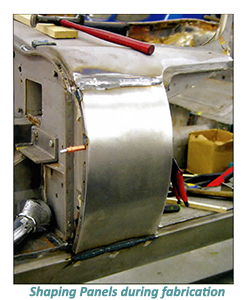 Most popular brands of the Fifties and some Sixties cars were fitted with steel wings which, apart from making them more vulnerable to bangs and splits, were prone to rust where they joined the chassis.
Most popular brands of the Fifties and some Sixties cars were fitted with steel wings which, apart from making them more vulnerable to bangs and splits, were prone to rust where they joined the chassis.
On the upside, wings are found to be more responsive to restoration, providing they are not too severely damaged.
Repairing a car's wings can involve a fair amount of panel beating and welding.
Both of these professions are highly specialised, and should only be attempted on the experience and facilities that the individual restorer has at their disposal matched their abilities.

Cars of all ages are liable to rust, although each to a greater or lesser extent- again a task better left to the professional and experienced.
In the case of bodywork corrosion, most of it can be stripped and sanded away, although holes and severe deterioration will have to be cut out, or the panel will have to be replaced with a new one.
If the vehicle is suffering from visible accident damage or excessive, it does not mean that it cannot be repaired, although great care must be taken to ensure that the frame has not been bent beyond reapir in an accident or has rusted so much that it cannot support the weight of the body.A careful check at the local Vehicle Licensing Authority is perfectly legitimate if there is reasonable doubt.
![]()
The first step in accurately assessing the extent of accident damage is to determine its scope and boundaries.
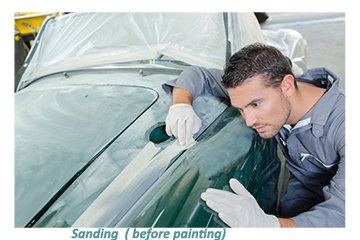 If the seller is willing to wait ( or even if they are not), the best thing to do is mark the areas of distinct damage with a permanent marker and photograph them in as much detail as possible.
If the seller is willing to wait ( or even if they are not), the best thing to do is mark the areas of distinct damage with a permanent marker and photograph them in as much detail as possible.
These images can then be taken along to a panel beater who should provide a reasonable estimate of how much time and money it will take to repair the damaged areas.
In any event, if bodywork repairs must be done unless the restorer is an expert welder, irrespective of how enthusiastic they are, the best way to deal with damaged panels is to replace them.
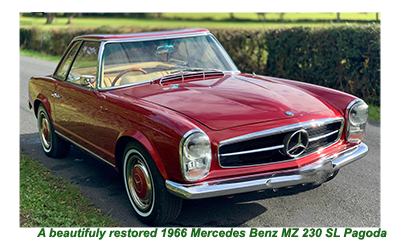 The good news is that replacement parts are still being made for these vehicles and are not overly expensive. What should be considered is that carrying out the actual repairs is very time-consuming, especially if some metal fabrication is involved.
The good news is that replacement parts are still being made for these vehicles and are not overly expensive. What should be considered is that carrying out the actual repairs is very time-consuming, especially if some metal fabrication is involved.
That is the reason why a renovator on a limited budget might be inclined to settle for a classic with as little bodywork to be done as possible because farming out a complete bodywork repair will be expensive, with the possibility of taking up a significant part of the overall restoration budget.
 Classic car restoration can be a challenging and thankless job. None more so than when it comes to bodywork repair and restoration demand levels of perseverance, financial management and technical skills above and beyond the call of duty.
Classic car restoration can be a challenging and thankless job. None more so than when it comes to bodywork repair and restoration demand levels of perseverance, financial management and technical skills above and beyond the call of duty.
Yet nothing looks better than a classic car restored to its original splendour, with its bodywork refreshed, looking just as good, if not better, as when it rolled off the production line more than sixty years ago.
bo23



